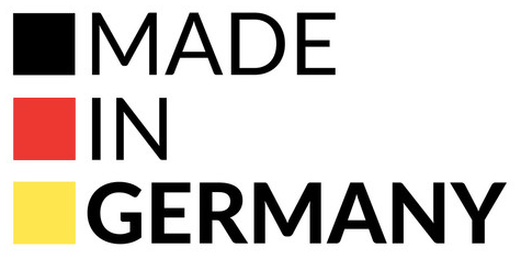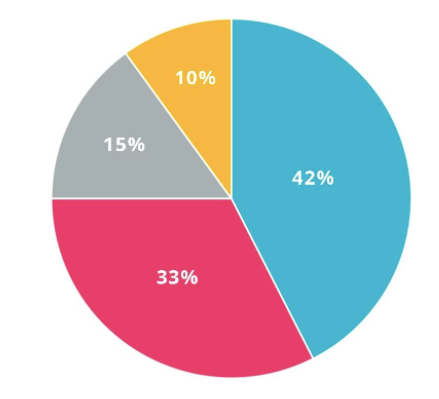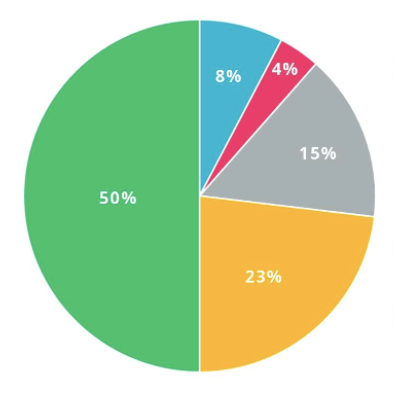Survey: German online retail fails at the border
Written by
Editorial TeamPublished on

Sellers Miss Cross-Border Growth and Business Potential
Freiburg, October 19 2017 – German online retailers are less active in cross-border trade than their international counterparts. According to a recent survey as well as current market data and studies, under 60 percent do business outside of the German-speaking countries. Two thirds (68 percent) make less than ten percent of their online sales in international business, and only 18 percent have customers from abroad. These statistics are included in a new white paper on the “Internationalization of the German Digital Economy” by OXID eSales and TextMaster. It can be downloaded via http://bit.ly/oxid-textmaster. The authors show cross-border business potential and give recommendations for building an international shop presence.
international business: the state of german shops
Germany finishes sixth in the ranking of the most popular international trading places. Only 14 percent of international customers buy from German online shops – significantly less than, for example, from US sellers (45 percent). What is more, international customers are considerably more willing to do cross-border business than Germans. Just one in four (27 percent) German online shoppers buys abroad while some of their European neighbors reach 87 percent (Portugal), 49 percent (Czech Republic), and 67 percent (Ireland). The main reason for a cross-border purchase as given by 66 percent of respondents is the availability of an item.
Graphic: Four out of ten German online shops restrict their activities to their home country

How international is your e-commerce today?
- Are only active in DACH
- Have localized international websites (language)
- Localization with centralized infrastructure
- National subsidiaries
Source: OXID eSales AG, August 2017
As many as 33 percent of online retailers have internationalized their shops. Ten percent even have branches abroad.
The most popular items for purchasing online across borders are clothing, shoes, and fashion accessories (33 percent); consumer electronics (21 percent); as well as books, music, and media (14 percent).
Graphic: Only one third earns more than ten percent in international business

Percentage of international business
- Over 50 % of total revenue
- 31-50 % of revenue
- 11-30% of revenue
- 5-10 % of revenue
- Less than 5 % of revenue
Source: OXID eSales AG, August 2017
Two thirds (68 percent) of German online retailers make less than ten percent of their sales to international buyers.
What keeps German online shops from using these possibilities? Roland Fesenmayr, CEO, OXID eSales, explains: “The reasons include fears of having to invest too much, of too many obstacles that have to be overcome, of markets that are largely unknown. There is a great potential in internationalization that German online retailers have not yet begun to tap into.”
One of the largest obstacles to building an online shop for international customers is language. It is no surprise that German online sellers focus their cross-border activities on countries without a (or only a partial) language barrier. 89 percent of all internationally active German online shops do business in Austria, 77 percent in Switzerland. However, other neighboring countries are attractive as well: The Netherlands (73 percent) and France (72 percent) are the third and fourth most important markets. Outside of the EU, the USA (33 percent) and Russia (21 percent) are the top venues, while China`s share is relatively low at 14 percent.
“The results are clear,” says Victoria Weidemann, Marketing Manager DACH for Textmaster. “German online retailers, agencies, and trade show organizers want to reach customers abroad, they are active in these countries, and they expand. However, many of them do not realize that customers want to be addressed and be able to make purchases in their own languages, not just in English. With 23 different languages in Europe alone, there is a massive untouched potential.”
Strategies for International Success
OXID has three tips for online retailers to build their international businesses:
- Create a country version of the online shop that is completely translated and has an intuitive handling. Customers abroad are as demanding as they are at home. Are there country-specific preferences, e.g. regarding payment methods?
- Resolve questions that come with the market entry: What is included in the marketing concept? Would it be better to build a country-specific brand?
- Keep an eye on the long-term strategy: Do you work towards a local branch? If you (have to) offer local services for customer care, a warehouse, and logistics, you will probably plan with an international presence in the target markets. In other cases, a very good localization of your shop is likely the best strategy.
OXID eSales surveyed 100 leading online retailers located in Germany in summer 2017 for this study.
The Textmaster white paper with the results from all studies is available at: http://go.textmaster.com/lp-de-internationalisierung-deutsche-digitalwirtschaft
Data from the current OXID eSales survey can be found on pages 9 through 15.
More recommendations for internationalization are collected in the white paper “Global Success – 12 Success Factors for Efficient Internationalization.” It is only available in German.


